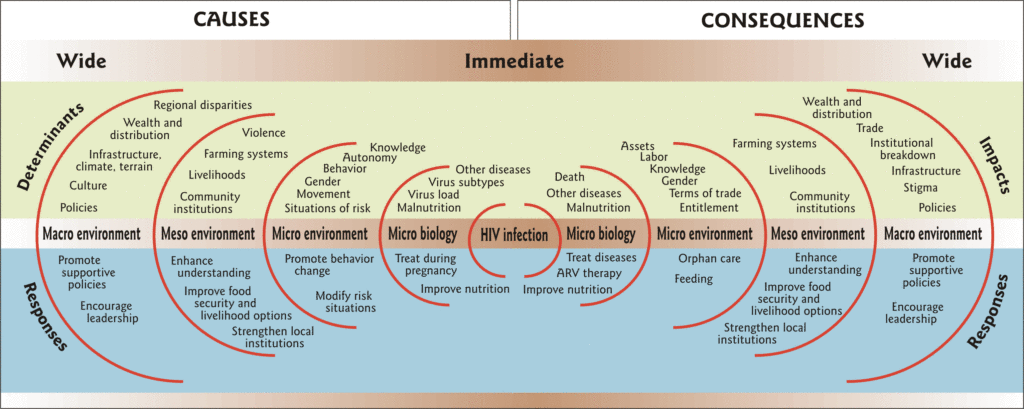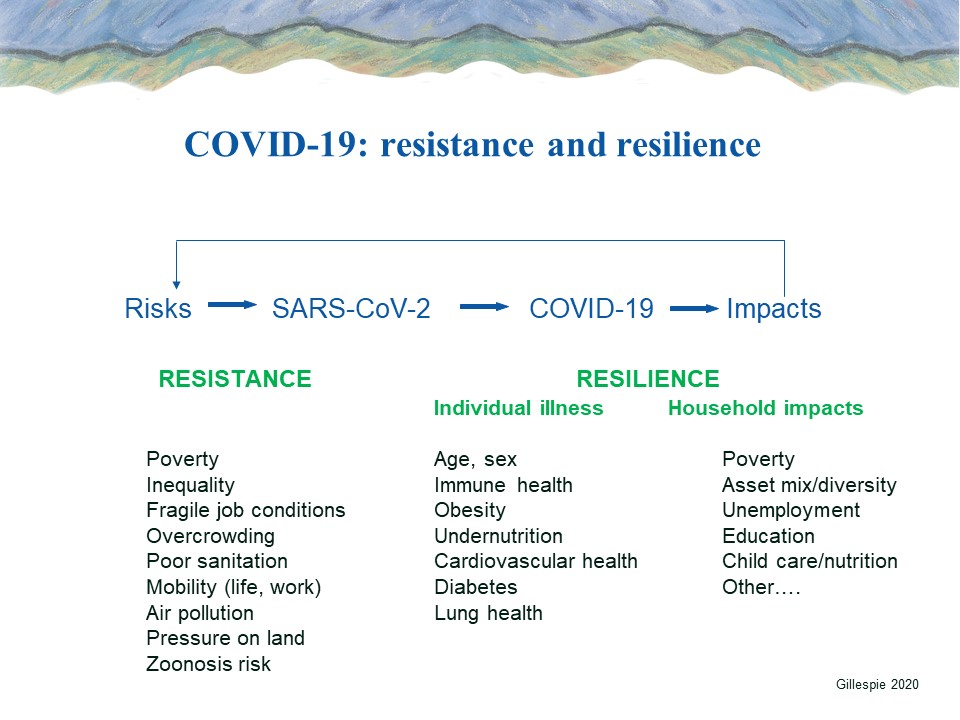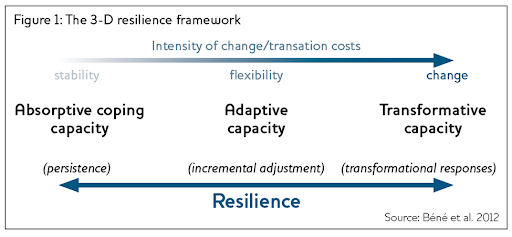As the COVID-19 pandemic generates waves of impact across the globe, “resilience” is bouncing back into the development spotlight.
Whether linked to health (e.g. AIDS, Ebola) or economic (food prices), climate or conflict shocks and stresses, resilience has come to be seen as a useful organizing principle. A conveniently fuzzy, all-embracing, cross-sectoral goal around which we can all align.
There are many definitions out there. Most refer to the ability – in the face of a shock or stress — to recover or bounce back to a past state. A type of buoyancy or toughness in the face of adversity — the capacity to weather the storm, to cope. The Intergovernmental Panel on Climate Change, for example, defines resilience as the ‘ability of a system and its component parts to anticipate, absorb, accommodate, or recover from the effects of a hazardous event in a timely and efficient manner’.
In the face of COVID-19, at an individual level, resilience is ultimately the ability to survive. For households, it’s the ability to withstand multiple social and economic impacts.
Alongside the return of resilience, we see another emerging discourse that argues for the need to jettison business-as-usual in a post-COVID world. We need to create a “new normal”. This sounds very like transformation — quite different to coping.
So, can these two goals – resilience and transformation – actually co-exist?
But first, even before we ask questions about resilience, we need to consider resistance. The front-line of resistance to a new virus like SARS-CoV-2 is an individual’s immune system. We can go further back to ask why s/he was exposed to the virus in the first place — was she working or living in an environment in which she had more contact with potential carriers? Was she in control, could she reduce the risk of exposure? If her ability to avoid exposure – her resistance — is overwhelmed and she becomes infected, then we’re in the realm of resilience.
In 2003, in the early years of RENEWAL, we conceptualized both resistance and resilience in the context of AIDS epidemics to help understand the different layers and waves of HIV risk and AIDS impacts. In the top left quadrant (of the diagram below) we can see the different drivers of risk of exposure to the virus, from macro to micro. In the top right quadrant, we can see the waves of impact, from micro to macro. The bottom half shows potential responses – resistance to the left, resilience to the right.

Source: Loevinsohn and Gillespie (2003)
As we learn more about COVID-19, we can develop similar maps to help situate a comprehensive response. Here’s a simplified illustrative version, including potential key factors (some as yet unproven):

Much has been written about resilience in recent years. In May 2014, IFPRI convened an international conference “Building Resilience for Food and Nutrition Security” in Addis Ababa, Ethiopia that led to a book of key papers.
Where is agency?
One criticism of resilience in the past has been its perceived inability to capture issues of power, agency and social justice. It’s seen as an apolitical concept that is not necessarily pro-poor. It is quite conceivable, for example, for a household to demonstrate resilience (using a certain metric) but for this to entail major costs. A household may remain “food-secure” in the face of climate shocks or seasonal stresses, but there may be a big price to be paid (e.g. to the nutrition and health of women working dawn til dusk transplanting rice, and/or to young children who are not adequately cared for during peak labour demand).
Clearly there are potential trade-offs. We need to ask questions about equity, about the cost of resilience, and who pays? We need to consider scale (individual, household, community etc) and timeline (e.g. does resilience endure?).
Pelling (2011), for example, argues that the notion of resilience as “buffering” is too limited as it simply reinforces the status quo. Bene et al (2012) suggest a more organic way to bring power and agency into resilience thinking is to incorporate them directly into the conceptualization, as per their “3-D framework”.

Beyond the limited notion of the capacity to cope by absorbing shocks (on the left), there is the capacity to adapt, and even to transform. At a systemic level, this refers to a fundamentally new food or health system.
Agency, power and politics are thus captured in this framework. We can also see how the ability to absorb a shock ensures stability, which in turn provides the potential for incremental adjustments and even transformational change.
We could apply such a framework to individuals, households and communities — and we could apply it to health and food systems. Bringing in the related concept of vulnerability, we can see how certain food systems — in which wild animals, domestic animals and humans are in close proximity in wet markets — are vulnerable to zoonotic emergence. The virus crossed species and now it’s crossing entire systems. Emerging from a food system, it has gone on to overwhelm health systems, and to undermine global economic systems in a way that’s not been seen for more than a century.
Societies and economies will survive — in some form. In the aggregate, they are resilient. But the COVID-19 pandemic is exposing and amplifying many forms of inequity. We need to differentiate actions and impacts within households and health or food systems and ask questions about the cost of resilience, and who actually pays?
In the UK, for example, it is front-line health workers who — day after day, separated from their own families for weeks on end — put their lives at risk to keep people alive. The resilience of the health system (in this case, the NHS) derives from the actions of these individuals. They are paying the price of resilience — not the politicians who, for years, have argued against raising their wages, and who dithered for weeks before responding to the pandemic.
In sum, resilience can be a useful common goal across sectors and systems — so long as it is treated comprehensively, and so long as it includes an analysis of equity. And it is possible to strive for resilience and to pave the way for transformation into a more sustainable, more equitable future. These two goals are not mutually exclusive. But it will require actions that strengthen all three components of resilience (absorptive, adaptive and transformative) together, at multiple levels (individual, household, community).
